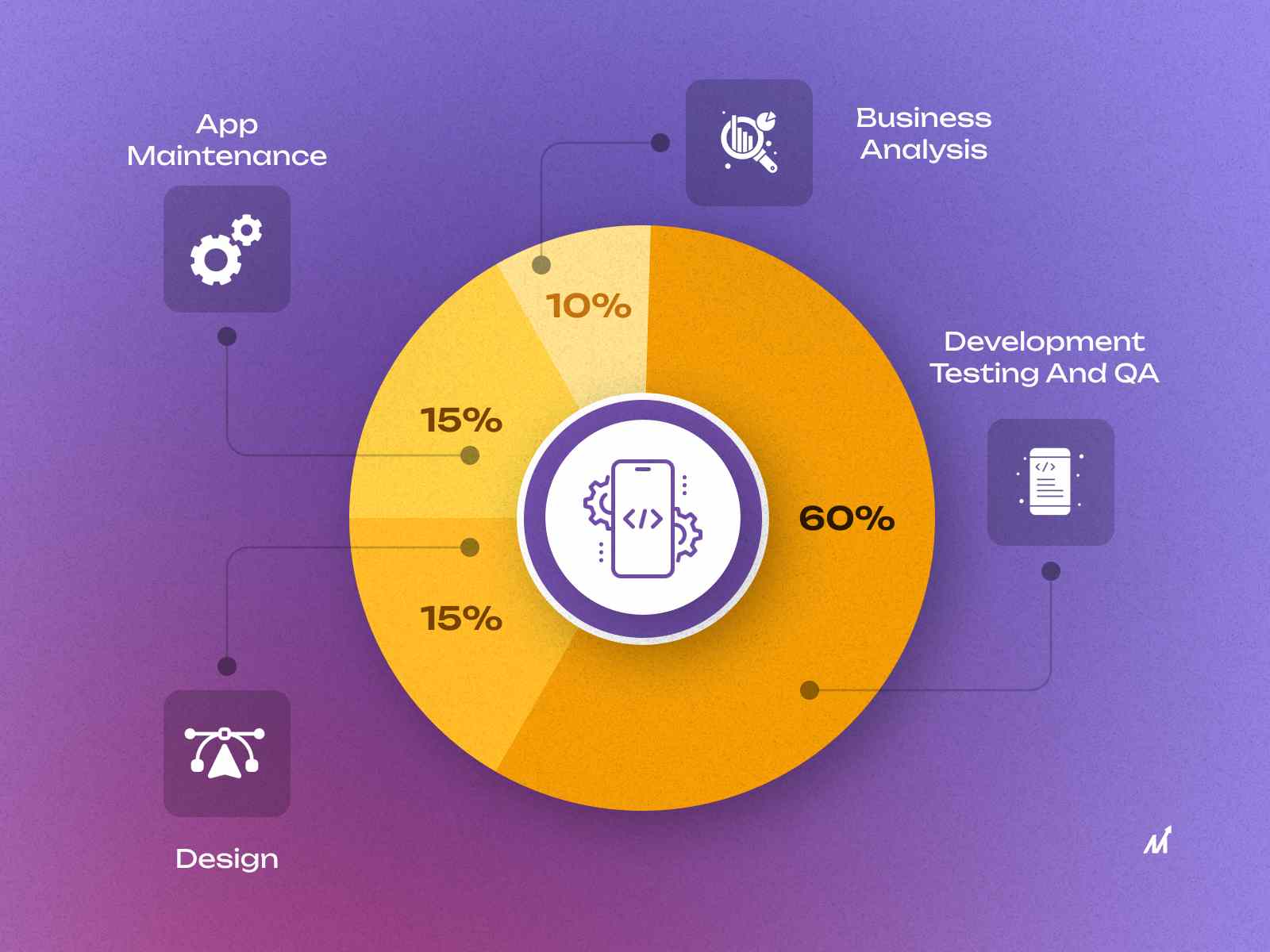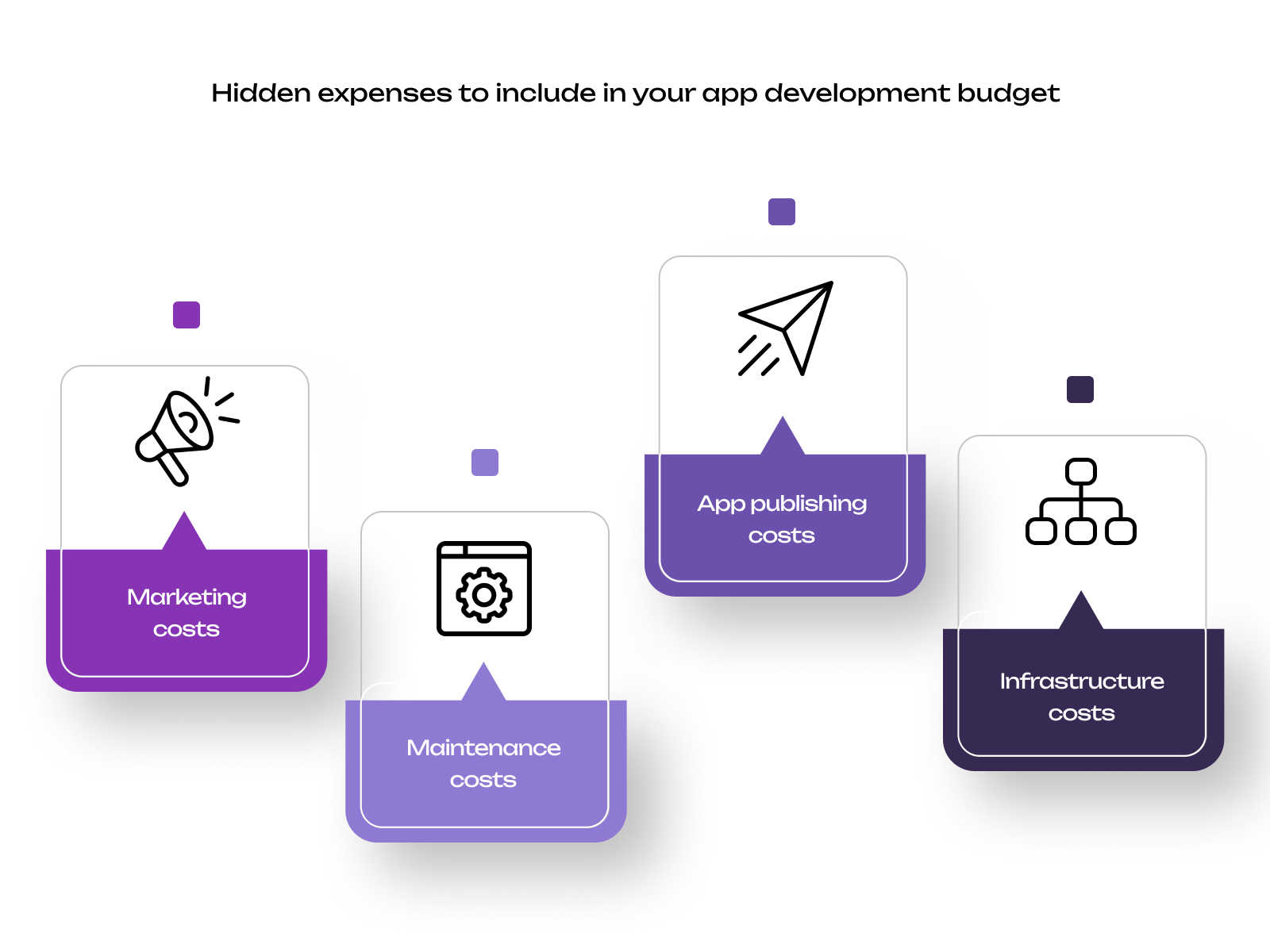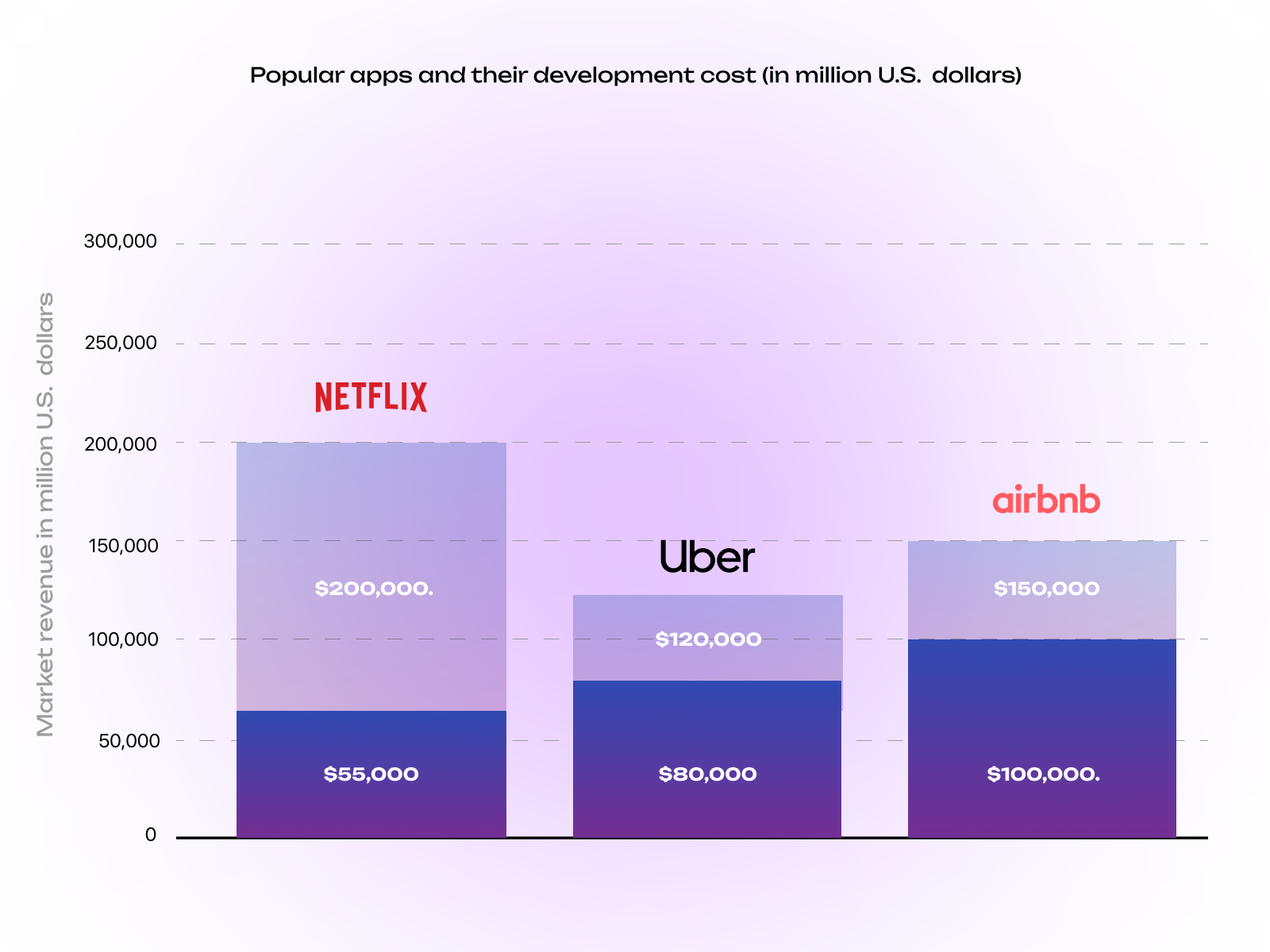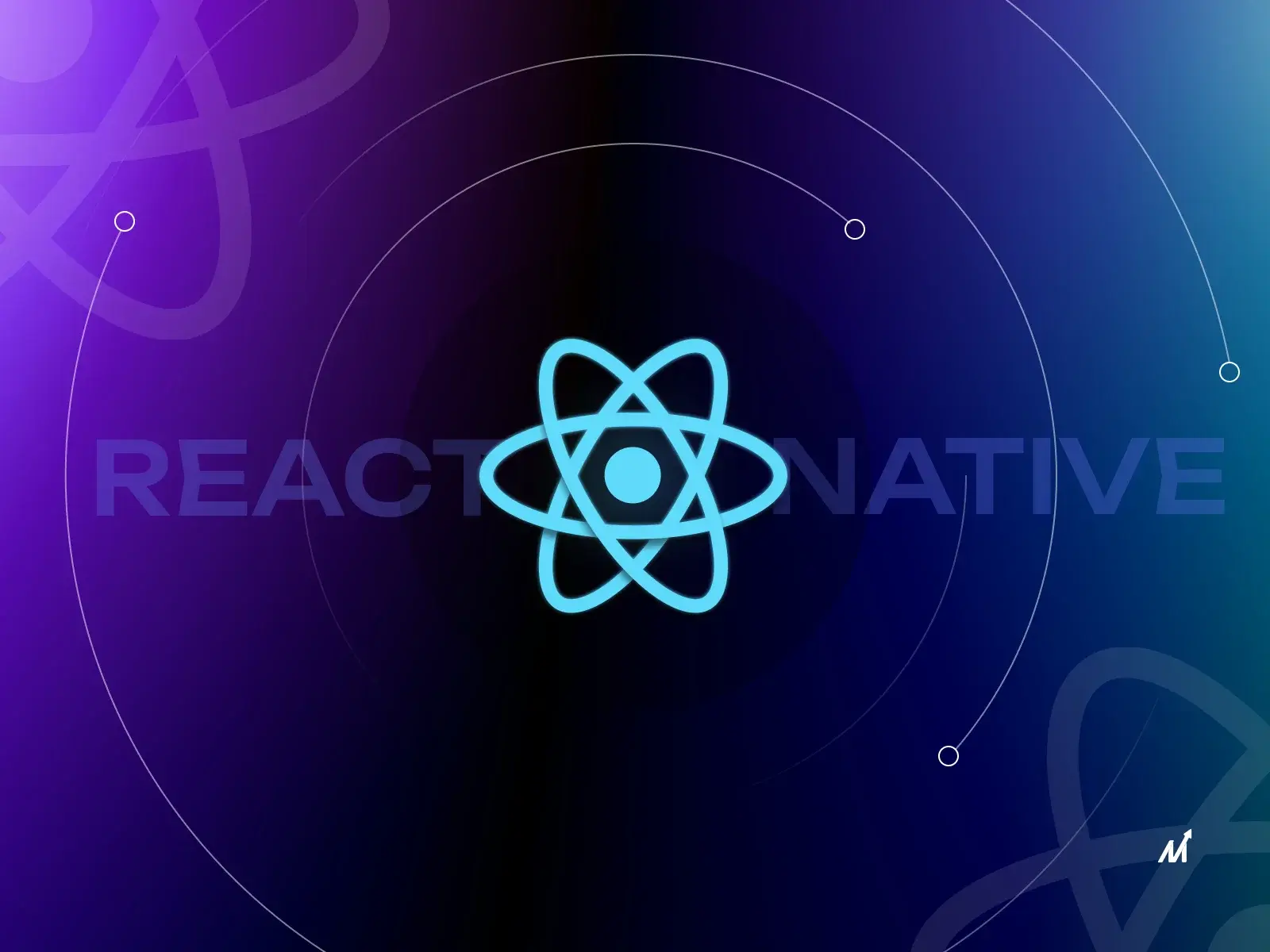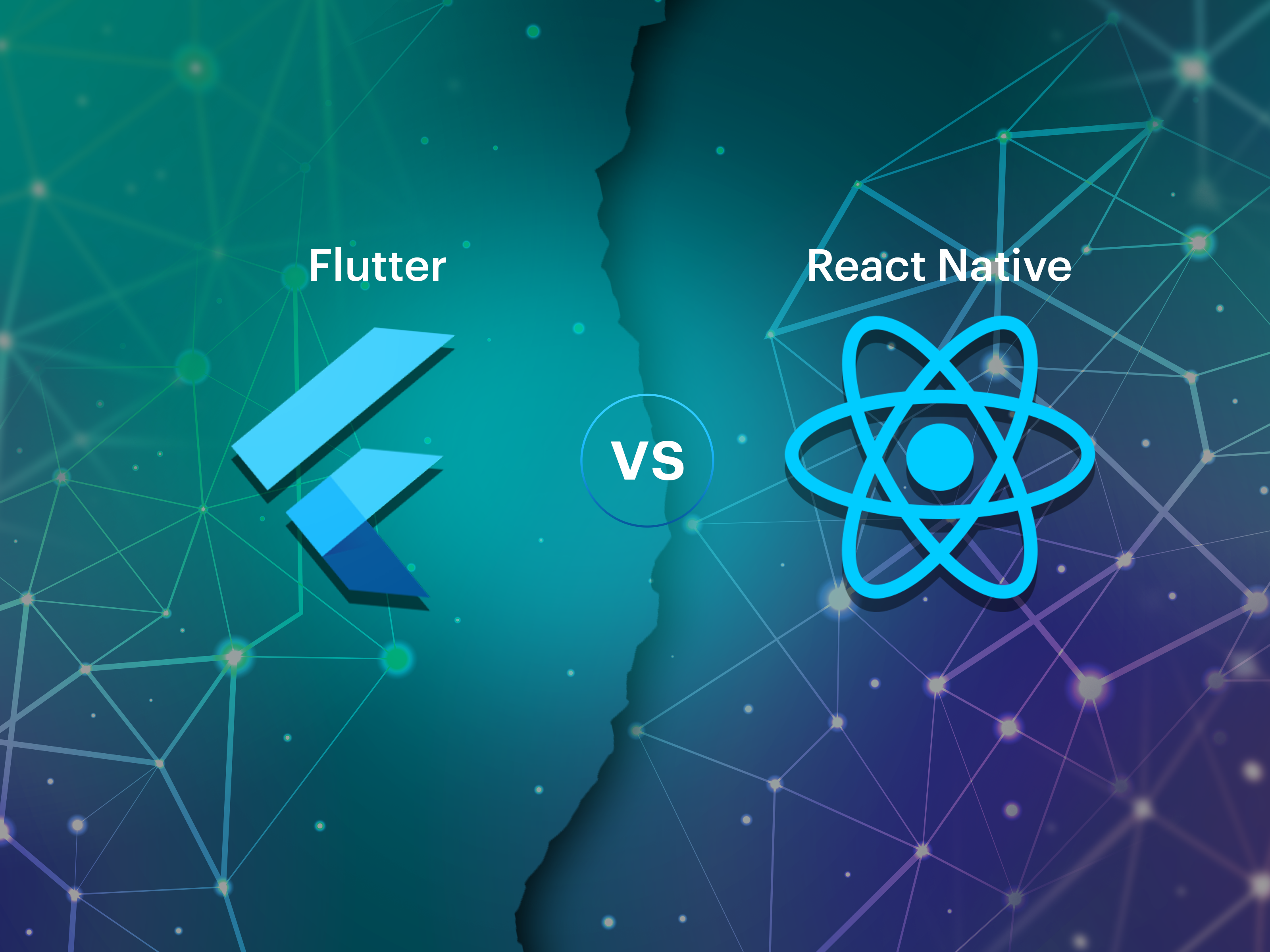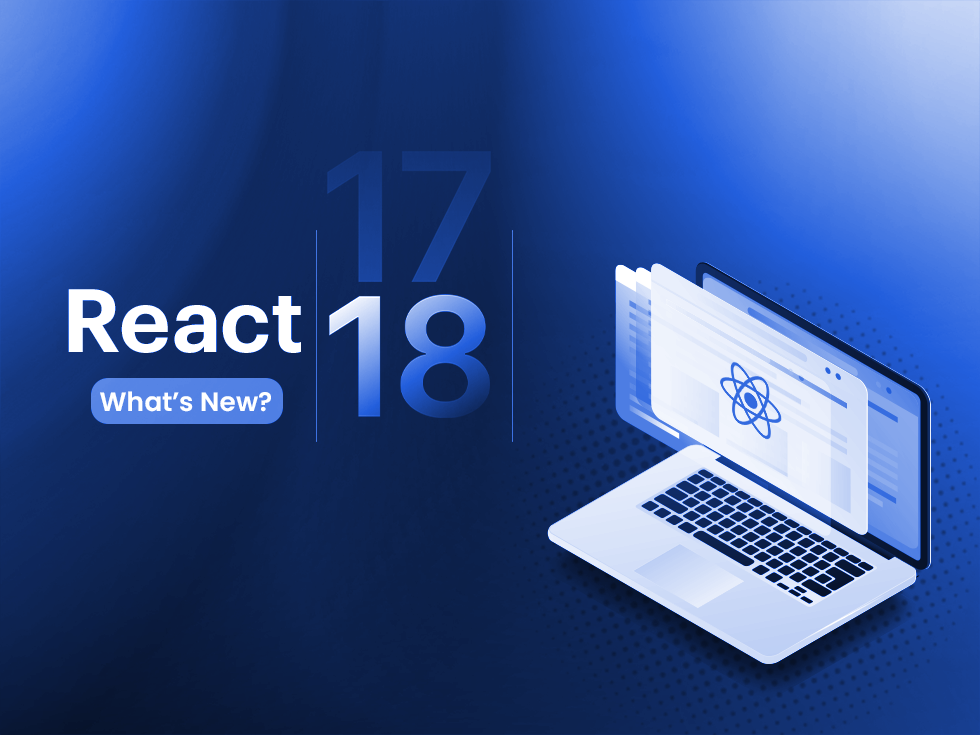The adage “you get what you pay for” is certainly true in developing mobile apps. There is no easy answer to this intriguing question, and most of the time, the answer is “It depends,” which leaves more questions than answers. As a CEO or CIO, you might have many foundational questions. Two queries likely cross your mind: “How much does app development cost?” and “How does the pricing vary?”.
The mobile app development cost can be estimated on various websites you may come across internet, but they are merely marketing ploys to get your attention by asking a few simple questions about your needs. You won’t see the complete picture from the estimation you receive.
In a nutshell, mobile app development can cost anywhere from $40,000 to $500,000.
However, that is a sizable range, right? The truth is that many factors influence how much an app will ultimately cost to develop. This is due to the complexity and wide range of variables involved in app development.
Factors influencing the app development cost
A complete business analysis must be conducted before developing your app to determine what features and functionalities it needs. Many factors influence the overall cost of an app. Let’s examine each of these factors separately:
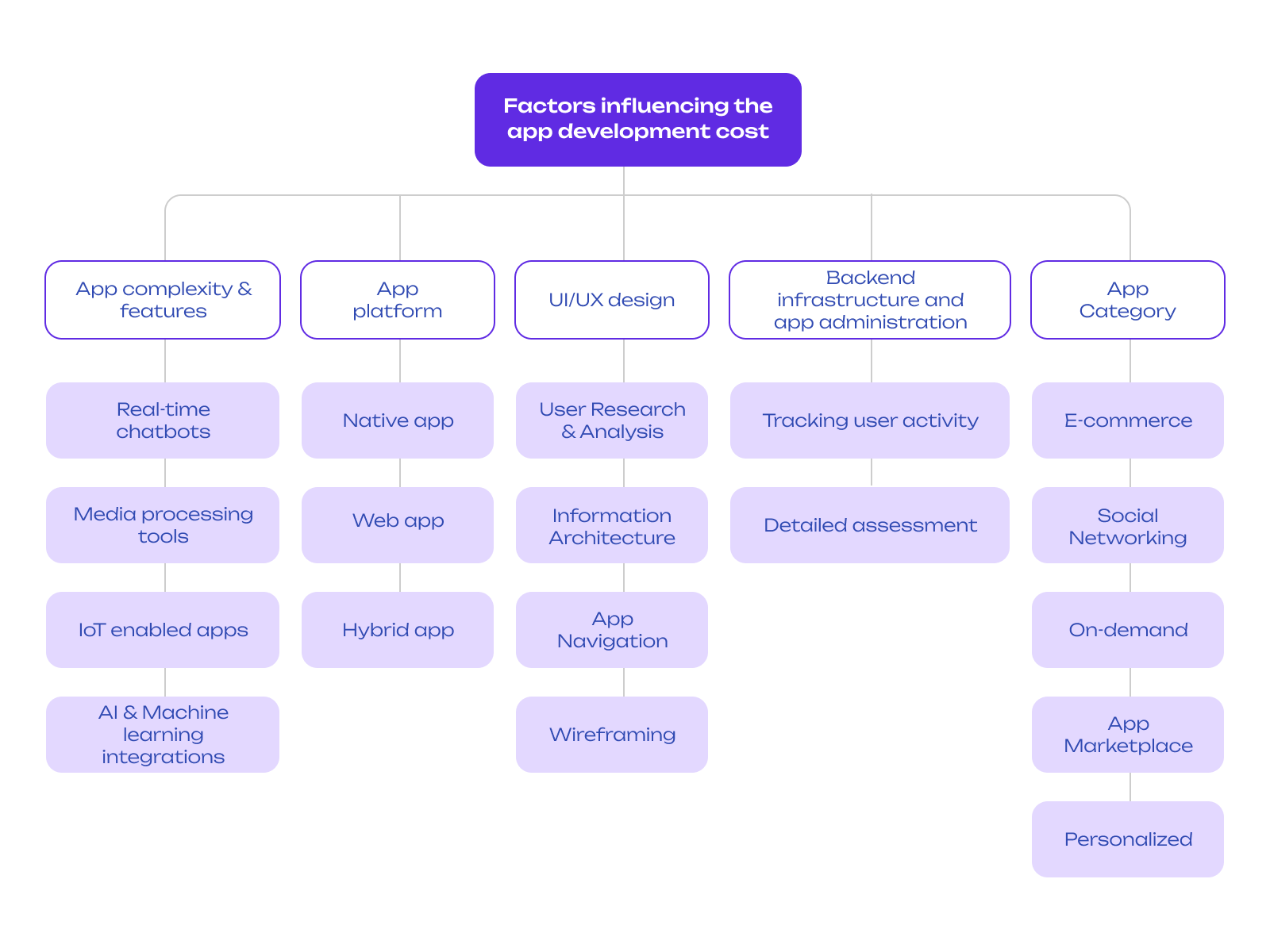
1. App complexity & features
The complexity and features of the app play a key role in deciding the app development costs. If the functionalities of your app are very complex, the cost of developing it will increase.
The app building cost increases even more with the integration of mainstream APIs and machine learning models. You could believe that adding features like geolocation is simple and affordable; however, using conventional app development techniques, these features are also expensive.
Smaller and simpler mobile apps can be developed quickly on a shoestring budget because they take less time to develop. To establish how much scalability you require in the app architecture, you must consider your future intentions even while creating a modest app. Keep in mind that complicated architecture requires more work and increases the cost of developing an app.
Some of the additional app features which can increase app production cost and time are:
- Real-time chatbots
- Media processing tools
- IoT enabled apps
- AI & Machine learning integrations
2. App platform
Mobile apps can be broadly divided into Native, Web, and Hybrid types.
Native app platform:
Native apps provide excellent performance and usability. The native app development tools for each operative system can support updates to the UI and UX. They are accessible via Google Play in addition to the App Store.
If you want your app to have excellent performance and high usability, you should go with native app development. Significant advantages of native apps:
-
A native app is extremely fast and responsive because it’s built using the programming language and API specific to a given platform.
-
In terms of user input and output, native mobile apps operate more smoothly. These kinds of applications take on the OS interfaces of their host devices, giving them a unified appearance and feel.
Progressive web app:
Progressive web apps are web applications that, despite utilizing various web technologies, have a look, feel, and user experience of a native app. Their USP is a rich native-app-like experience on any browser or device. They are built using current web technologies such as HTML, CSS, and JS. PWAs operate over HTTPS and adhere to all security standards, making them a reliable and secure solution. The client and server interactions are unhindered by data tampering, which is extremely low.
Progressive web applications are responsive and work with all browsers. As a result, they are incredibly versatile and may be utilized on any screen size and browser, regardless of connection.
Hybrid app platform: Hybrid app development, as the name implies, is a cutting-edge method of app development that enables you to make an app that runs on various platforms. While creating a hybrid app, iOS and Android users’ mobile applications are built from the same codebase. The affordable development costs of hybrid apps are one of their benefits.
Xamarine, React Native, Flutter, and many other well-liked hybrid app development tools are available with various frameworks. Compared to native apps, development is simpler and less expensive. Hybrid apps can be the right choice if you need standard usability and a tighter budget. Meanwhile, a sizable user base is supported by hybrid apps as well.
You can read our blog for a detailed comparison between Native vs Web vs Hybrid.
3. UI/UX design
The number of apps available to users is vast. Users are, therefore, likely to abandon an app in favor of a better one if it has a poor UI and UX.
One of the most significant mistakes people make is spending all their money on developing and designing the app’s UI and UX using some off-the-rack tools. The downside of using such tools is that they have limited designs and do not produce unique designs. Also, as these platforms have pre-designed elements, any major customization is impossible. As a result, all the apps designed using such a platform look almost alike. We recommend taking UI/UX design seriously and hiring an expert app designer to design your app.
The UX designing costs can be broken down into four components mainly, which are:
-
User Research & Analysis
-
Information Architecture
-
App Navigation
-
Wireframing
Typically designing an app costs around $10,000 to $20,000.
4. Backend infrastructure and app administration
The servers, databases, and other technology that support an app’s operation and data storage are referred to as the backend infrastructure. While a more complex app would need more servers and a more advanced database, like a NoSQL or cloud-based database, to handle a large amount of data and a high number of users, a simpler app might only need a few servers and a primary database. A CRM or e-commerce platform integration may also be required, which will increase the complexity and cost of the development process.
App administration, also referred to as continuing app management, includes tracking the app’s performance, upgrading it with new features and bug patches, and handling user accounts. Simple applications might just need a small amount of administration, whereas more complicated apps might need constant monitoring, upgrades, and user management.
In conclusion, several variables, including the complexity of the backend infrastructure and app administration, the usage of cloud services, the need for scalability, and the degree of customization necessary, can affect the app development cost. These charges should be considered when creating a budget for an app project.
5. App Category
App development costs can vary based on the app’s type or category. Developing an app for a different category may require different requirements and features, increasing its complexity and cost.
For instance, the cost of developing a simple utility app like a calculator or flashlight may be less than that of a more complex application like a social media or game app. While social media and gaming apps frequently have more intricate graphics and animations and a bigger number of functionality, utility apps typically have fewer features and a simpler user interface.
Let’s quickly review the most popular categories for developing mobile apps.
E-commerce/M-Commerce apps:
Integration of other systems and APIs, such as payment gateways and inventory management systems, is necessary for e-commerce apps, which can complicate and increase the cost of the development process. To protect sensitive client information, these apps also need a lot of security features, like encryption and secure data storage.
Costs between $70,000 to $200,000
Social Networking apps:
The user management, real-time communications, and data storage requirements for social media apps are substantial. Additionally, they frequently offer many features, like user profiles, friend lists, and message threads. These elements may increase the development process’s complexity and cost. Furthermore, social media apps must manage many users and data, which can call for a more complex backend architecture.
Costs between $50,000 to $200,000
On-demand apps:
There are three versions of every on-demand application, including the most basic ones: for users, service providers, and businesses. Apps for on-demand services often need to track service providers and clients in real-time and integrate with external systems and APIs, such as GPS and mapping services. These apps also need many user management and communication tools, like push alerts and in-app messaging.
Costs between $60,000 to $150,000
Marketplace apps:
Like e-commerce apps, marketplace apps need to be integrated with external systems and APIs like payment gateways and inventory management systems. Since marketplace apps often involve multiple parties, such as buyers and sellers, they require extra features like rating systems, reviews, and dispute resolution. Furthermore, to assist customers in locating what they’re looking for, marketplace apps need to process a large amount of data, which may necessitate a more complex backend architecture. This may lead to a higher development cost for marketplace apps than for e-commerce.
Costs between $70,000 to $160,000
Personalized apps:
Apps specially designed to meet each user’s unique requirements and preferences are personalized apps. Numerous user data points, analytics, and customization options are frequently needed for these applications. To give customers a tailored experience, personalized apps often demand more advanced technology and development resources, such as machine learning and artificial intelligence. More testing and optimization are frequently needed for personalized apps to ensure that they function successfully for various consumers. Personalized apps may therefore require more money to develop than essential utilitarian apps.
Costs between $50,000 to $100,000
Why do so many apps fail to succeed?
Although many start-ups have business ideas related to app development, more than 80% fail due to a wrong approach. Though their failure can be easily attributed to a lack of experience, there are many other factors to consider before spending money on or creating mobile apps for your company.
Here are the main reasons why mobile apps fail to succeed:
-
Lack of market research: Many app developers launch their apps without conducting in-depth market research. As a result, it may be difficult to attract users to connect with and embrace an app that does not cater to their requirements or interests.
-
Poor user experience: Many apps don’t offer a decent user experience, which can result in low adoption and engagement. Various elements, including a confused user interface, lengthy load times, and subpar performance, can cause poor user experiences.
-
Poorly designed architecture: Poorly built app architecture can cause scalability problems, poor performance, and trouble maintaining and updating the application.
-
Lack of marketing: It might be challenging for customers to find apps because many developers don’t spend money on marketing and promotion. Low user engagement and download volume may result from this.
-
Technical debt: Failure to modify and maintain the codebase over time can result in a buildup of technical debt, making updating or scaling the service in the future challenging and expensive.
-
No proper maintenance and updates: Many app developers neglect to update and maintain their apps regularly, which can result in bugs and security flaws.
You can read all these points in detail in our previous blog: Why Do So Many Apps Fail To Succeed? 7 Major App Failure Reasons & Checklist
Hidden expenses to include in your app development budget
When considering app development cost estimates, you must include the following factors affecting your overall budget. Most businesses fail with their applications because either they ignore these expenses or forget to estimate these beforehand.
Let’s examine each of them in more detail.
1. Marketing costs
Businesses frequently ignore a crucial expenditure pattern like marketing. Every app which is developed needs a marketing plan. Marketing the app does not mean advertising the app, but it includes various other elements:
- Website development cost: The website will be a place where you will launch the app for your existing customers or clients. Designing and developing a website does not cost too much, maybe around $5,000 to $8,000, but still often never estimated beforehand. Hence it becomes a burden for the app owner at the last minute.
- App Advertising: Mobile apps can be advertised on social networks, Youtube channels, app stores, and other relevant websites and platforms. However, this is another expense that is mostly unknown to the app owner and hence avoided in the app development estimates.
- App Promotion: For promotional purposes, the app engagement and marketing cost includes activities that engage a mobile app user base. It is often an overlooked and hidden cost. As much as an app’s development determines its success, its marketing plays an equal role.
2. Maintenance costs
We recommend considering maintenance costs at the beginning of app development. Most app developers include a free maintenance timeframe of up to 3 months of app launch. However, buying an additional maintenance period with the same developer before the app launch is a good idea. The cost of maintaining an app is not too much, maybe around $15,000-$25,000, so discussing this cost before the app launch is always a good idea.
In most cases, app maintenance includes:
- Bug fixing
- Code optimization
- Improving stability and performance
- Support for new OS versions
- Supporting the latest version of third-party services
3. App publishing costs
App store requirements are taken into consideration when developing apps. It’s not all that big in terms of app store costs. A one-time $25 must be paid when submitting your Android app to the Play Store. Alternatively, the Apple store costs $99 a year. You must spend $299 per year to join the Apple Developer Enterprise Program and release your application through the App Store if you only want to distribute it within your company. The service is free on Google Play.
4. Infrastructure costs
Data storage, data delivery, and app hosting are all included in the infrastructure cost. Everything above increases a project’s expense and complexity. Some infrastructure cost elements include servers, development tools, and libraries.
The hosting cost of an app depends on the following:
- Content or app data– whether it is text or media, like photos, videos, or audio
- Number of active users
- Storage needs
Therefore, you should discuss the infrastructure costs and subscriptions beforehand with the app developers to avoid any surprises later.
Popular apps and their development cost
The prominent applications listed below lead the app market and have redefined and revolutionized customer experience. The approximate cost of developing these apps has also been highlighted.
1. Netflix
The top media streaming service in the world is Netflix. Users can stream tv shows and movies whenever it’s convenient for them. Netflix’s market value has been $240 billion since October 2020. If we calculate how much money Netflix makes each month, we can see that its sizable subscriber base—whose monthly subscription fees range from $9.99 to $19.99—is its primary source of revenue.
The Netflix app has the following features:
- Subscription idea
- Payment portal
- Multimedia player
- Screen mirroring
A Netflix-like app typically costs between $55,000 and $200,000.
You might also want to know how to create an app like Netflix.
2. Uber
Uber is a ride-sharing app that links customers with nearby drivers. Although Uber’s initial investment was $510,000, it raised more than $25 billion. Over 118 million people are presently using the app. Uber’s revenue in 2021 was $17.4 billion, up 56% from the previous year and more than in 2019. The coronavirus pandemic caused a 21% reduction in Uber’s revenue in 2020.
The Uber app’s key features include the following:
- Location tracker
- Routing and advanced route optimization
- Authentication and authorization feature
- In-app payment and withdrawal portal
An app like Uber typically costs $80,000-$120,000 to produce and takes around 3-4 months to complete.
3. Airbnb
Airbnb is a mobile application that links renters and individuals looking for lodging nearby for a specific time. From a $20,000 starting investment, Airbnb has grown to a $30 billion valuation. With a 78% year-over-year rise, this business model brought in $6 billion in revenue in 2021.
The Airbnb app has the following features:
- Search field
- In-app chat
- Filters for targeted search
- Listings
A mobile application for Airbnb can take up to 1000 hours to develop and costs over $80,000 – $150,000.
Commonly asked questions related to app development cost
1. How much does it cost to maintain an app?
After the first year, the industry norm for software maintenance is between 15% and 20% of the overall cost of development. This implies that if the development of your mobile app costs $100,000, the annual maintenance costs are likely in the vicinity of $20,000.
2. How much does it cost to update an app?
Updating an app means ensuring it is compatible with the latest iOS and Android versions. Making your app compatible with a new version of iOS won’t cost you a dime. iOS was only problematic once Apple required all developers to convert their software to a 64-bit architecture. When this anomaly appeared, Apple granted developers more than a year to update their programs. Apple also supported 32-bit software for two years before transitioning to the new architecture.
The app maintenance budget should be between $10,000 and $14,000.
When it comes to new features such as Face ID, ARKit, Core NFC, etc., that arrive with a new mobile OS version, it’s a different story. Implementing this functionality could cost much more than a dime, depending on how comprehensive the additional capabilities need to be.
3. What are the factors that affect the overall app development costs?
Features and functionalities, the app’s complexity, design and animation, code reusability, size and location of your development team, etc., along with other hidden app development considerations, are some factors that determine the app development cost. Get an app development estimate from Markovate.
4. What is the cost of marketing an app?
The cost of marketing an app depends on your app audience market, app category, app location, and existing customer size. Usually, an app marketing company can charge you anywhere from $35,000 to $65,000.
Apps Developed by Markovate – Costing and timelines
Since we have built more than 200+ mobile apps, we can give you a rough estimate of your app development, design cost, and timeline on the first call. However, we recommend you have a detailed document of app features and requirements ready before we estimate. A simple document explaining the app’s vision, features, and functionalities.
Markovate has worked with some top brands to build their app solutions. Contact us for more details on how we can help with your app development.
Further Read: Mobile app development process: 6 Key-steps to build your successful app

